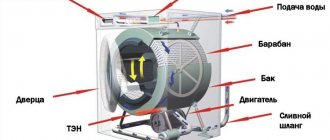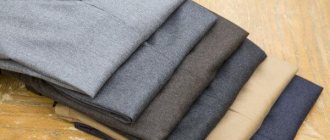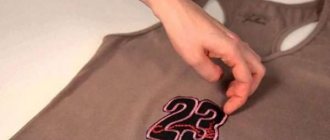Quite often, owners set the ironing mode incorrectly and scorch the fabric, after which they do not know how to remove iron marks on clothes. Having seen such an unpleasant picture, most housewives are sure that it is no longer possible to remove a stain, shiny mark or scorch mark. Fortunately, in most cases it is quite possible to solve this problem and restore the appearance of things.
Iron marks can be removed from fabric in most cases.
Why do stains and marks appear on clothes?
It is important to understand the reasons why the surface of fabrics deteriorates during ironing. Products made from a variety of materials suffer due to the following:
- the smoothing temperature regime is violated;
- the rules for steam treatment of the fabric surface are not followed;
- the iron is not cleaned, as a result, a burn mark remains on the fabric, which appeared on the sole during the previous ironing;
- the fabric is not rinsed well enough after washing, which is why detergent remains on it, which, under the action of the soleplate of the iron, burns and leaves stains.
In order not to make a mistake when choosing a temperature regime and steam treatment, study the tags that are sewn to the clothes on the wrong side. They clearly indicate whether a coat, jacket, shirt or any other item can be ironed and at what temperature (see picture).
Images on tags corresponding to different heat treatment options for fabrics
Rust from rivets
Mother was washing her own beloved snow-white summer jacket with small sleeves and pockets, on which there were iron rivets with a hole at the top of the pocket. When my mother washed them, the pockets became rusty from these iron rivets. I would like to amuse my mother and correct this deficiency after washing. Please tell me how to do this. There aren’t really any thoughts on the web. And your website is fascinating. Thank you for such a website. On your website I looked at an article about stains and patches, but this is slightly different... Or maybe I don’t have enough imagination.
Thanks in advance. Thanks again for everything.”
Regarding the restoration of the blouse, it is difficult to say anything specific without seeing the blouse and the degree of damage caused. If anyone has ideas other than those listed above and thoughts on redesigning Lyudmila Petrova's T-shirts, please send them to me and I'll post them on the mailing list.
READ I think I forgot to turn off the iron
Regarding rust, I can recommend the following options:
tear off the pockets completely, or reduce them in size by cutting off the rusty places;
cut out rusty rivets and stained fabric and sew applique or flaps on top;
Carefully pull out the rivets and do embroidery in their place, maybe throw in holes decorated with embroidery. By the way, embroidery can be done with threads that match the fabric, so that it will not be visible.
Removing yellow marks on light-colored clothes
Don’t be upset if you see that your favorite white sweater has a yellow mark on it. You can remove iron stains from white clothes using various means.
Lemon juice or citric acid is suitable for all types of fabrics. Squeeze the juice from half a lemon into a container and dilute it with the same amount of warm water. Moisten the stained area with the resulting solution. After 15-20 minutes, rinse the material in cool water. Instead of juice, you can use citric acid.
You can get rid of stains using lemon juice
Bleach (calcium hypochlorite) is used to clean cotton clothing. Dissolve a small amount of lime (1 teaspoon) in 1 liter of water. Treat the problem area with the resulting solution. Wait a few minutes until the stain disappears, then rinse the fabric under running water.
Bleach can be used to bleach and disinfect cotton fabrics.
Borax (sodium tetraborate) removes yellow marks from white linen and cotton fabrics. Dilute a teaspoon of borax in a glass of water. Pour the mixture onto the dirty area of clothing and wait a few minutes. Then rinse the material and iron it.
Borax is used in medicine, manufacturing processes, and to remove stains from white linen and cotton fabrics.
Hydrogen peroxide with ammonia is suitable for light-colored woolen clothing. Mix both compositions in a 1:1 ratio. Wet the problem area of the fur with the resulting solution and position it so that the sun's rays fall on the surface. After the scorch marks disappear, rinse the woolen item in water at room temperature.
Onion is an effective remedy that can remove small stains from light-colored woolen clothing. Cut the onion into two parts, apply one of the halves to the contaminated area of the fabric. Wait half an hour, then rinse the product well. To remove onion odor, you can use a conditioner with a pleasant aroma.
An onion will help get rid of stains on fur
Curdled milk and other fermented milk products are used on all types of textile materials. Soak the textile in sour milk for a couple of hours, then wipe the scorch with a soft brush so as not to damage the structure of the fabric. As soon as the stain disappears, rinse the product thoroughly in running water.
Fermented milk products are sold in any store
I burned the fabric with an iron... What should I do?
First of all, you need to take care in advance that dark or shiny spots do not appear on things after ironing. Even a novice housewife, so that she does not burn the fabric with an iron, what to do before ironing, must remember these simple rules like twice two:
First aid if the housewife burns her trousers with an iron and they “shine”
What should you do if something containing natural wool shines after ironing? In this case, experienced housewives recommend placing a damp cotton cloth under the stain, turned wrong side up. Then, with a hot iron (preferably through a layer of cloth moistened with water), you need to iron this place again.
The housewife should also know, if she does burn her trousers with an iron, what to do in this case. Cleaning the area with a stiff brush, such as a toothbrush, lightly moistened with water, will help get rid of the shiny stain.
Some experts advise rubbing the lasina (glossy spot) with a clean manicure file or a piece of fine sandpaper. The pile raised by this procedure is then recommended to be shaved off. This is easy to do with a regular razor.
If the proposed options do not help the housewife who burned her trousers with an iron, what should she do then? There is only one way out: refacing the product. The work is painstaking and quite complex. Usually, children's clothes or women's skirts are restored in this way. Even in cases where the back side is very different from the front side, this restoration option is successful.
However, it is almost impossible to alter men's stylish trousers (alter them by making the wrong side right side) at home. It’s easier to make another thing out of them, for example, pants for a baby or a skirt for mom. But this only makes sense if the fabric is new enough and of high quality.
Burnt your dress with an iron? What to do - people's advice
Today, only an inexperienced housewife can ruin a thing by ironing. Or this happens due to oversight or negligence. After all, every iron has a temperature regulator. But in ancient times, when there was no trace of them yet, this happened at every step. And what would a woman of the last century do if she burned her dress with an iron? What to do in this case is suggested by numerous collections of useful tips published in the mid-twentieth century. These recipes are extremely simple.
How chemistry helps the one who burned her dress with an iron
Source
How to remove glitter marks on dark synthetic fabrics
Iron marks on black fabric, whether fully synthetic or partially synthetic, cause a lot of trouble for housewives. Don’t be upset in advance, because shine on synthetics can be quickly removed using various methods. Help in removing the gloss will be provided by substances that are found in almost every home.
Using gauze and laundry soap is the simplest and most affordable method for removing iron marks. Grind the soap using a grater. Dilute the shavings in water to form a concentrated solution. Lubricate the surface of the gauze with the same soap, then dip it into the resulting liquid. Place a damp cloth on the affected area of the clothing and iron it with a heated iron until the iron mark disappears. Leave the item to dry (no need to wash it).
Removing shine from black trousers using an iron, soap and gauze
Vinegar is a universal cleaning agent familiar to everyone. It is used in cases where dark items have a slight shine from the iron. Vinegar most likely will not eliminate serious damage to fabric fibers. Make a weak solution of table vinegar and soak the damaged area of clothing in it for an hour and a half. Then hang the item to dry (no need to wash it).
If you do not want to soak the fabric, iron the problem area with an iron through gauze soaked in a vinegar solution.
Preparation of vinegar solution
Brewing black loose leaf tea can remove shiny iron marks. Soak a cotton pad in it and wipe the damaged area until the material stops shining. This method can only be used on dark fabrics, as the product has a coloring effect.
Strong brew of black loose leaf tea
Onions are a universal remedy for removing both various stains and shine on synthetics. Grate the onion on a fine grater. Apply the resulting paste onto the shiny mark and wait half an hour or an hour. Then wash, rinse thoroughly and dry the clothes. Even serious damage can be removed using this method.
You can use onion pulp to remove iron stains from trousers.
Using salt and hydrogen peroxide is a good way to treat dark clothing in warm, sunny weather. Apply water to the damaged area of the fabric and spread table salt over it. Apply a few drops of peroxide on top. Now hang the clothes in such a way that direct sunlight illuminates the shiny trail. Wait until the fabric is dry, then rinse the clothing well in cool water and hang it again to dry.
Table salt crystals are one of the universal cleaning products found in every home.
The video will tell readers how to remove shine from the surface of dark wool trousers:
Methods for repairing tulle
Any tulle curtain is unique. Voile, organza, chiffon, mesh - no matter what fabric has its own structure, monotony, pattern. The question of how to sew tulle should be approached taking into account the characteristics of the curtain.
Apply the web with glue to the wrong side of the part and simply iron the web paper on top
Then we peel off the paper from the glued web
We put the decorative part that we want to stick on top, the front side of the fabric comes out from above, and iron it
From time to time it is quite easy to pin or sew a decorative butterfly or feather to it to disguise the hole. Before sewing up torn areas, show your imagination and creativity. So, a hole from a burnt cigarette can be decorated with an applique from another tulle curtain. This is a labor-intensive task, but if you succeed, your curtain can take on a completely different look, more beautiful and unique.
With the help of various embroideries and overlays, you can not only decorate the damaged area, but also decorate the tulle
How to sew tulle after cat claws
One of the frequently asked questions is how to sew up tulle if it was torn by a cat. Unfortunately, pets often spoil various interior items. Excessive playfulness, unexpected fear - and the cat is already hanging on the curtain, clinging to it with its claws. Fortunately, there are no torn, incomprehensible damage to tulle. They always take the form of horizontal or vertical cuts. And this is great, since sewing along the straight line of the mowing line is quite simple.
- If the cat did not manage to tear the fabric and a pinch formed, then it can be repaired by sewing a ribbon or braid in this place. In most cases, the ties are vertical, so the braid will have to be sewn along the entire length of the curtain. Sometimes, one sewn ribbon looks awkward, then sew another one, symmetrical, or make several stripes. It would be quite original if they were of a contrasting color, crowned with a bow or tassel.
Using a mowing line, we sew a decorative braid or fringe into the overlay, decorate it with a bow, a tassel or other decor.
Cut out the torn piece horizontally, stitch it back, decorate
If the tulle is torn at the top or bottom, sew another one, or a contrasting piece of tulle
Methods for removing iron marks on colored clothes
You can also use improvised means to treat affected areas of colored clothing:
| Means | Application |
| Skimmed milk | Soak the damaged item in milk and leave for an hour. Then wash the product using laundry detergent to remove any remaining product. Cotton materials can be restored well in this way |
| Kefir | It can be used to remove scorch marks from most types of fabrics. Moisten the moistened area with the stain generously with kefir and wait 2-3 hours. It is better to leave thick cotton, linen and satin items for 8-10 hours. Remove any remaining kefir with a sponge or napkin and wash the product as usual. |
| Baking soda | Effectively removes scorch marks on silk clothes. Dissolve two teaspoons of baking soda in a quarter glass of water. Apply the resulting mixture generously to the affected area and wait until the liquid dries completely. Remove any remaining baking soda with a sponge and wash your clothes. |
Removing stains with soda solution
Combating defects in bolognese products
Many consumers probably remember the time when bologna jackets were at the height of popularity. For their manufacture, a special nylon fabric is used, which includes a unique waterproof coating. But even in the modern world, such products are very popular, because they are affordable for every category of consumer, and also protect well from piercing wind and rain in bad weather.
Despite significant advantages, such jackets have a main drawback - the relatively low strength of the material. One wrong move, and the jacket can easily be damaged due to mechanical or chemical effects. As practice shows, it is precisely such holes that are much more difficult to repair accurately. Before sewing up a Bolognese jacket, you need to assess the nature of the damage and the quality of the product itself.
Experts say that to eliminate a burn, rupture or cut, you must adhere to several rules:
- At the first stage, you need to choose the right adhesive composition for repairing outerwear. To do this, you should carefully study the label located on the inner lining of the jacket. It is best if the selected glue is tested on a small area of clothing that is invisible to prying eyes. Experts say that glue that contains a special ester of acetic acid and rubber has good properties. If such an option is simply not at hand, then you can give your preference to “Moment” glue.
- Now it's time to carefully cut the patch to fit the cut. A small piece of fabric made of rubberized material or bologna will look most organic and attractive. It is worth noting that the color of the patch and the jacket itself must match.
- The inside of the product must be thoroughly wiped with a cotton pad, which must be pre-moistened in acetone. After these manipulations, the jacket should lie for several minutes.
- At this stage, you need to apply glue to the patch (all manipulations must comply with the instructions). Be sure to wait a few minutes.
- Gradually glue a piece of fabric on the wrong side. To record the result, you need to place a small press on the treated area, the weight of which should be at least 2 kg. Wait 3 hours.
- There are situations when from the front side the gap looks very sloppy, then this place can be decorated with an appliqué of a suitable size and color.
Some tips for ironing fabrics
To prevent the formation of stains, tans and shine on any fabrics, adhere to the following universal rules:
- Iron wool and knitwear through slightly dampened gauze.
- If possible, iron items made from other fabrics from the wrong side - then you will definitely not spoil their appearance.
- Iron lace products, as well as items with embroidery, only from the wrong side, choosing a medium temperature level of the electric iron.
- For decorative items of clothing, it is best to use remote steam treatment. If this is not possible, carefully iron the decor with a warm iron.
- Velor and velvet require careful handling. Moisten the surface with a spray and gently iron these fabrics while they hang.
- Do not iron white items until they are dry. Ironing while wet may cause stains.
Remote steam processing of products
In addition to the above methods for getting rid of stains, scorches and shiny iron marks, there are many other methods. For example, you can use store-bought stain removers. But it is best to strictly follow the recommendations for ironing various fabrics, then there will be no need to restore your favorite clothes.
If there is a hole
If, after all, the iron has caused irreparable damage to the item, still do not rush to throw it away.
A little imagination and you will give your favorite blouse a second life! Take a close look at the burnt hole from the iron from a different angle. What do you see? Use your imagination! Maybe a heart, an unusually shaped flower or the silhouette of a cute little animal? We take multi-colored threads, beads, glass beads, and in place of the burnt hole, an image embroidered by your own hands, which you “saw” earlier, may appear.
Applique, lace, artificial flower, flounce, extra pocket - this is what will give your seemingly ruined clothes a second life.
We update the down jacket ourselves
If you carefully repair the damaged area, not a trace will be visible.
If a torn hole appears, you can not only sew everything up or apply a patch. Various types of applications are popular now. You can use this. Thus, you can not only get rid of the hole, but also update your down jacket.
Before mending a tear, you should visit the appropriate store to select a decal or pattern. A similar method can be used if the sleeve or main part of the jacket is torn.
Iron-on adhesives and applications
Appliques and stickers can help out in many cases, but this method has a drawback. You can sew on a pattern or stick on a beautiful picture only where it is appropriate, namely:
In other cases, the stickers will look stupid, which means it’s best to consider another way to fix the holes. If embroidery was chosen, it should be done on a separate fabric, which will subsequently be sewn to the torn area of the jacket.
Braid or tape
You can disguise the hole next to the seam using tape. Many people are interested in the question of how to fix a hole in a jacket so that it is invisible and also beautiful. It's simple, you should use all your imagination. It doesn’t matter what length or color the braid is. Don't be afraid to experiment.
Another way to disguise a hole is with reflective tape. The advantage of this method is that it will not only hide the defect, but will also make the jacket visible at night. You need to cut a piece of tape and carefully stick it over the gap.











